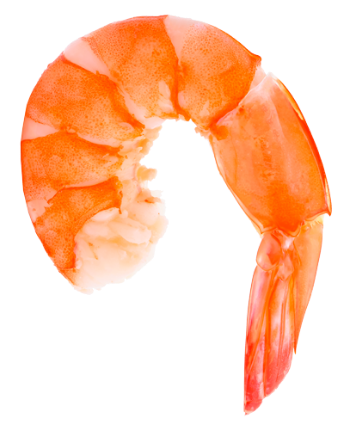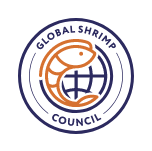Global shrimp council
The Smart Choice for a Healthy Lifestyle
Packed with high-quality protein, essential nutrients, and low in fat, shrimp is a delicious and nutritious addition to any diet. Eating seafood regularly can support heart health, brain function, and overall well-being. Learn more about how shrimp fits into a balanced lifestyle.
Vitamins A, B, D, omega-3 fats
An excellent source of lean protein
Vitamins A, B, D, omega-3 fats
An excellent source of lean protein
Great source of minerals: iron, zinc & magnesium.
Great source of minerals: iron, zinc & magnesium.
It’s recommended to eat two servings (8 oz) of shrimp per week.
Eating at least twice per week reduce their risk of dying of heart disease by up to 50%
Source: Dietary Guidelines for Americans.
shrimp health benefits
Once clients understand the good nutrition shrimp has to offer, they won’t be surprised to learn that incorporating shrimp into their diet can benefit the heart, brain, immune system, and waistline.
top global Shrimp producing countries
There are numerous species of shrimp. In fact, there are approximately 2,500 species. 100 species account for the majority of commercial shrimp catches worldwide.
Shrimp come in many sizes and across all species, they are versatile in dishes and all have a subtle, sweet flavor.
Here are the most common species of farmed shrimp:
Whiteleg Shrimp
(Penaeus vannamei)
Whiteleg shrimp is also known as the Pacific White Shrimp and vannamei . It is native to the tropical East Pacific from the Gulf of California, Mexico to northern Peru. Whiteleg shrimp is the most produced crustacean in aquaculture. This species is often used in curries, scampi, stir-fry and more.
Tiger Shrimp
(Penaeus monodon)
Tiger shrimp, also known as black tiger shrimp or giant tiger prawns are native to the Indo-Pacific region. They are the second most popular farmed shrimp species and have a sweet, slightly briny flavor and a firm, meaty texture.
Giant River Prawn
(Macrobrachium rosenbergii)
The Giant River Prawn (GRP) is found throughout the tropical and subtropical areas of the Indo-Pacific region, China, Bangladesh, Thailand, Vietnam, India, Taiwan, and Myanmar. The Giant River Prawn is one of the biggest freshwater prawns.
White Shrimp
(Litopenaeus setiferus)
White Shrimp are one of the most widely harvested and consumed shrimp varieties. They have a mild, sweet flavor and a tender texture. White shrimp are typically found in the Gulf of Mexico and along the southeastern coast of the United States.
Brown Shrimp
(Farfantepenaeus aztecus)
Brown shrimp are another variety found in the Gulf of Mexico and along the Atlantic coast of the United States. They have a slightly stronger flavor compared to white shrimp and a firmer texture. They are often used in dishes like gumbo and shrimp boils.
Rock Shrimp
(Sicyonia brevirostris)
Rock shrimp are found primarily in the western Atlantic Ocean, particularly along the southeastern coast of the United States. They have a sweet flavor and a firm texture similar to lobster.
Pink Shrimp
(Farfantepenaeus duorarum)
Pink shrimp are cold-water shrimp that are mainly harvested in the northern parts of the Atlantic Ocean, including the coasts of Canada, Greenland, and Norway. They have a delicate, sweet flavor and a firm, slightly crunchy texture. Pink shrimp are often served cold in salads or used in seafood cocktails.
Spot Prawns
(Penaeus platyceros)
Spot prawns are a type of shrimp native to the northeastern Pacific Ocean, ranging from Alaska to California. They has a sweet, succulent and delicate flavor. Spot prawns have a firm texture and are highly regarded in culinary circles.
Source: Dietary Guidelines for Americans.
Shrimp Sizes
When preparing recipes, consider shrimp size. Smaller and medium shrimp may be a good option for toasts, dips, cocktails or ceviche. Larger shrimp should be used in paellas, barbeques, garlic shrimp, and more.
Tiny
61-70
7g per shrimp

Small
51-60
8.4g per shrimp

Medium
41-50
10.4g per shrimp

Large
31-40
15g per shrimp

Extra Large
26-30
16.4g per shrimp

Jumbo
21-25
19.7g per shrimp

Extra Jumbo
16-20
25.8g per shrimp

Colossal
15 or less
30g per shrimp

Source: Dietary Guidelines for Americans.
Cooking Methods
Cooking shrimp gives fun and delicious flavor profiles. Shrimp is a versatile seafood option that can be prepared in various ways, such as boiling, grilling, sautéing, frying, and baking.
Here are some common methods and tips for cooking shrimp:
Poaching
When it comes to poaching shrimp, getting the cooking just right is especially crucial—most poached shrimp are served chilled and minimally dressed.
Grilling
Grilling shrimp can be a challenge when working with fast-cooking proteins like shrimp. Try grilling your shrimp nested on skewers or in a grilling basket for best results. Avoid overcooking the shrimp as it will quickly dry out.
Stir-Frying
Stir-frying is a cooking technique in which ingredients are fried in a small amount of very hot oil while being stirred constantly. This is a common method of Chinese cooking.
Frying
This is a cooking method based on immersing the product in oil or fat at a high temperature, whether or not it is coated with other elements. One of its most remarkable characteristics is its texture that prevents the loss of juices, but it is short-lived as the moisture of the food softens it, and its effect is quickly lost.
Broiling
Broiling means to cook food using the direct, dry heat from your oven broiler. Broiling gives shrimp that is perfectly crispy on the outside and juicy on the inside. It’s important to keep in mind that the broiler can get hot fast.
Source: Dietary Guidelines for Americans.



